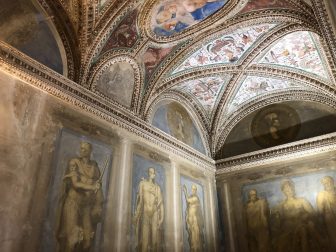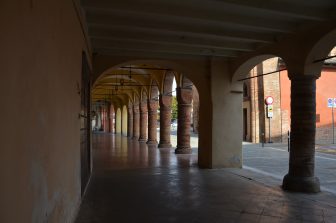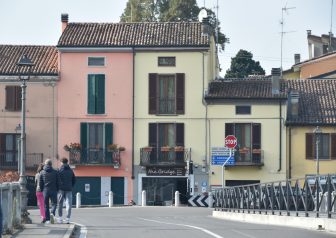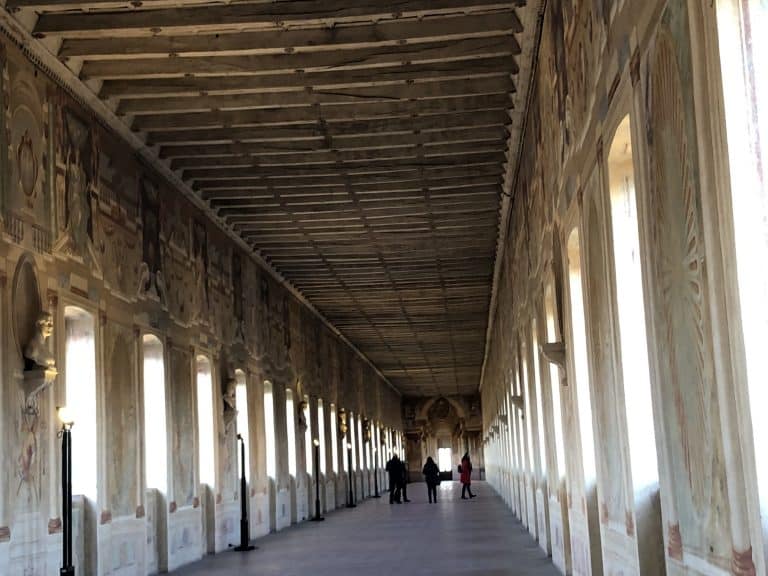
[ Nov.2018 ] In Sabbioneta, the World Heritage town in the north of Italy, we went to the Museum of Sacred Art next.
This museum is one of the three places we could get in with the ticket we bought in Chiesa di San Rocco.
Here, 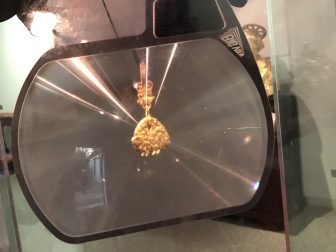
We could see it through the magnified glass.
I looked this up later and found that it is the insignia of the Order of the Golden Fleece.
Vespasiano Gonzaga, who built this town, received this insignia from Philip the Second of Spain.
This particular one was found in his grave, in the Church of Incoronata, in 1988.
The Order of the Golden Fleece is the knighthood started in 1429 by the Duke of Burgundy, who was known as Philip the Good.
Surprisingly, according to the online information, this knighthood still exists.
At the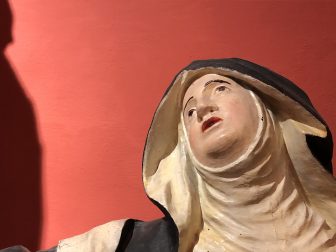
Generally speaking, it seems that it is given to kings and emperors or to people who have the right to the throne.
Apart from the golden sheep, in this museum we saw some costumes for the priests and some expressive statues of saints and so on.
The last place we went to in Sabbioneta was the Garden Palace, which was included in the other ticket.
The palace itself is a rather small white building, which is not very noticeable, but this building is connected with a long brick corridor, which I had noticed straight away when we arrived here.
According to the leaflet we got here, this Garden Palace was a private palace where Vespasiano Gonzaga and his guests enjoyed quiet moments, reading books or listening to music.
There are 7 main rooms with pictures of classic myths on the ceilings and the walls.
The external white wall used to have some geometric patterns in mock marble.
The long corridor connected to the palace is called Galleria, which was built between 1584 and 1586.
As the name suggests, it was really a gallery displaying Vespasiano’s collection of ancient statues and epigraphs as well as the antlers, the hunting trophies.
It looks like a corridor linking to somewhere, but because it was built as a gallery from the start, it does not connect with anything and finishes suddenly.
Apparently,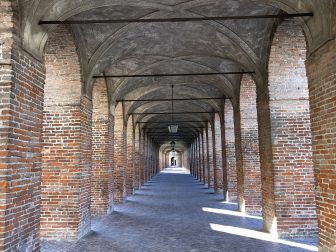
His treasures were here until 1773, when by an Austrian decree, they were moved to Mantua, about 30km away from Sabbioneta.
That was the end of our visit.
It is a small town, but there were many things to see here.

